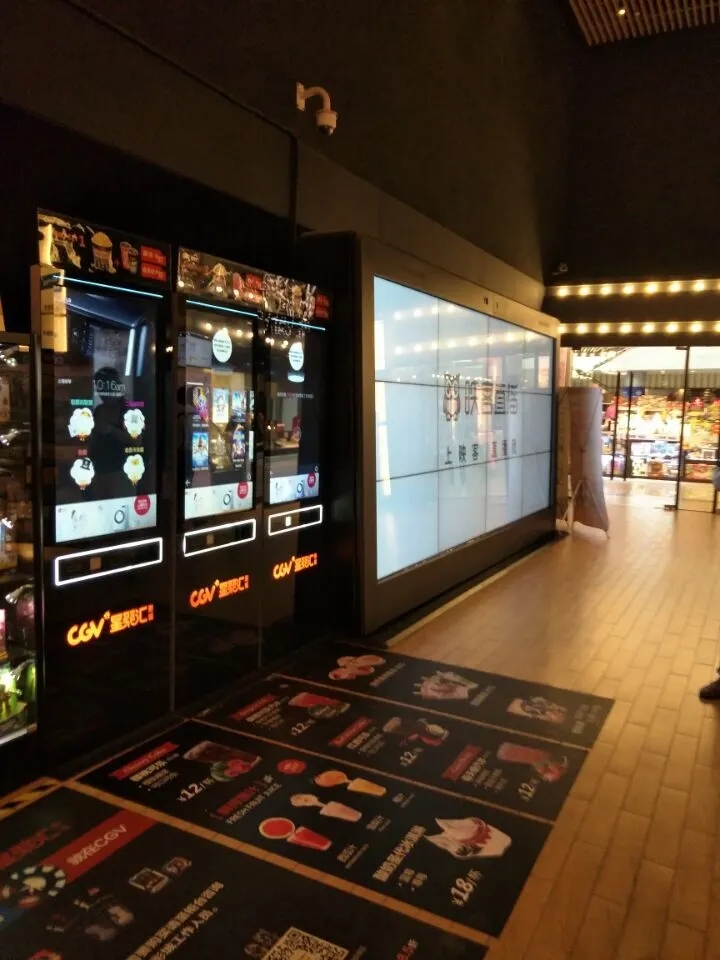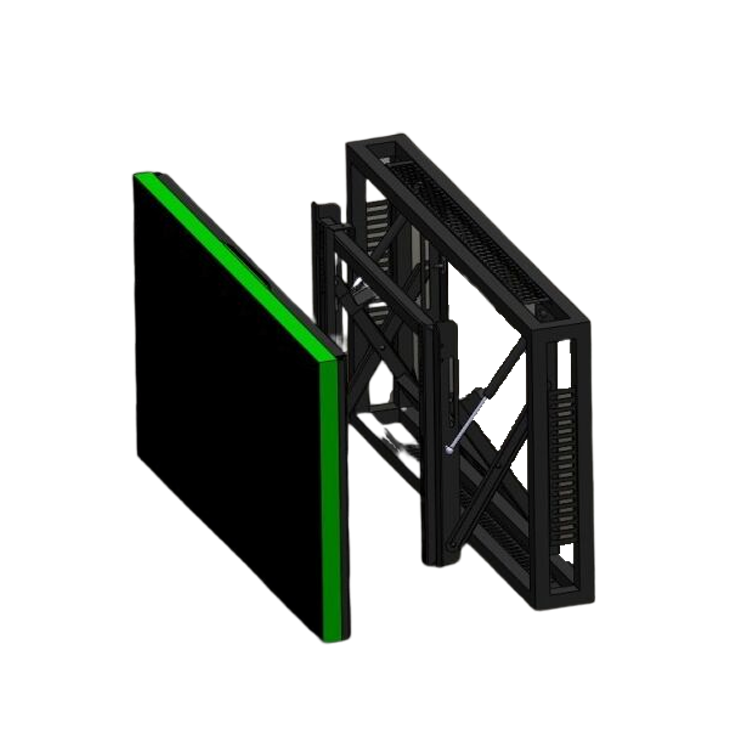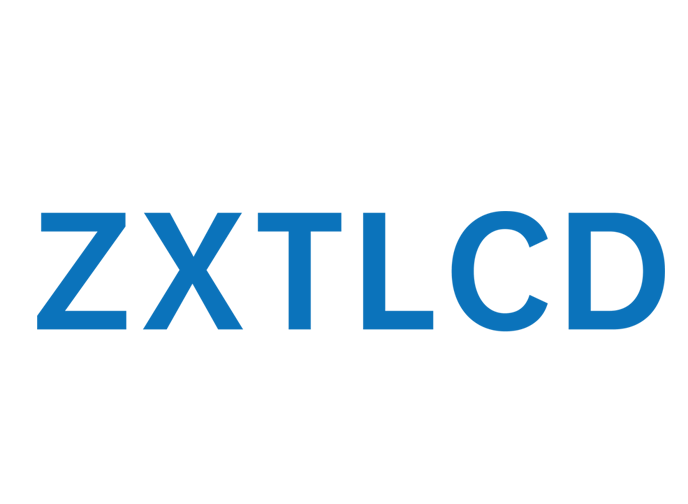Why should we understand the concept of LCD advertising wall when it comes to commercial displays?

Splicing display units can be used independently as individual monitors or spliced together to create a large screen display. Depending on different usage requirements, the graphics processor can be used to achieve variable sizing of the images, such as displaying multiple images on a single screen, displaying a single image on a single screen, freely combining multiple LCD advertising wall, image splicing, full-screen splicing, optional compensation or masking of image borders, support for digital signal roaming, zooming and stretching, multi-screen display, and the setting and operation of various display scenarios, all in real-time high-definition signal processing.
With the development of modern display screen technology, more and more scenarios are adopting display screens to improve efficiency and assist in work operations. For example, large screens used for advertising and various-sized meeting rooms and classrooms that require visual display. Among them, many people choose LCD advertising wall because they find them convenient and suitable.
There are two common installation methods for LCD advertising wall:
Front-maintenance hydraulic bracket.

Advantages: Lower cost.
Disadvantages: Loose structure, the position may shift during pushing and pulling.
Modular bracket.
Advantages: Lower construction cost, convenient transportation.
Disadvantages: Higher cost.
Characteristics of LCD advertising wall:
- Long lifespan and low maintenance cost. LCDs have the longest lifespan among display devices, and even the shortest lifespan of the backlight can exceed 50,000 hours. Even after such a long period, the only impact is a decrease in brightness, which can be restored by simply replacing the backlight tube. This is fundamentally different from projection devices, as the lifespan of LCD backlight sources is ten times longer than that of projection bulbs, making their advantages clear.
- Wide viewing angles. Viewing angles used to be a significant issue for early LCD products. However, with the continuous advancement of LCD technology, this problem has been completely resolved. The DID LCD screens used in LCD splicing walls have viewing angles of over 178 degrees, achieving an absolute viewing effect.
- High resolution and vibrant images. LCDs have much smaller pixel pitch than plasma displays, allowing them to easily achieve and even exceed the standards for high-definition resolution. LCDs also offer high brightness and contrast, with vivid and vibrant colors. BSV LCD splicing technology achieves a completely flat display without curvature, ensuring stable and flicker-free images.
- Ultra-thin and lightweight. LCDs are known for their thinness and light weight, making them easy to splice and install. Specialized 40-inch LCD screens weigh only 12.5 kg and have a thickness of less than 10 centimeters, which cannot be compared to other display devices.
- Low power consumption and heat generation. LCD display devices are praised for their low power consumption and minimal heat generation. Small-sized LCD screens have a power consumption of no more than 35W, while LCD screens larger than 40 inches have a power consumption of only around 150W, about one-third to one-fourth that of plasma displays.
- Long fault-free operation and low maintenance cost. LCDs are currently the most stable and reliable display devices. Due to their low heat generation and device stability, they do not suffer from failures caused by excessive component temperature rise.
Why choose LCD advertising wall? What are the advantages of LCD advertising wall?
The emergence of LCD advertising wall has resolved various deficiencies of traditional video walls and provided the best large-screen display system for convenient, comprehensive, and real-time display of video information from various systems, especially for remote real-time command and dispatch applications.
- Flexibility and convenience.
First, small modular screens are more convenient to transport and handle compared to large single screens. The installation process is also simpler and more flexible, making them suitable for various scenarios.
Moreover, unlike traditional screens that require a complete unit to function, LCD advertising wall can connect multiple smaller screens together. Each screen can play different content independently or act as a single large screen, providing a futuristic feel and the ability to integrate different devices for expanded functionality.
- Cost savings.
Compared to a single large screen, LCD advertising wall offers cost savings. As the size of the screen increases, the manufacturing cost per inch multiplies. Combining several smaller screens is more cost-effective than a single large screen of the same area. The difference in display quality between the spliced screen and a single large screen is minimal, allowing you to achieve the desired effect at a lower cost.
While large screens may have a strong overall visual impact, any damage or defects in a portion of the screen can affect the aesthetic appeal of the entire unit. Replacing an entire screen due to damage incurs significant costs. With LCD advertising wall, only the damaged units need to be replaced, significantly reducing replacement and repair costs.
LCD advertising wall offers numerous advantages, but there are also some drawbacks. Since they rely on assembling multiple screens to form a large image, there will inevitably be visible seams between the display panels, known as bezels.
Bezels are the gaps between adjacent screens after splicing. Common bezel sizes include 3.5mm, 1.7mm, and 0.88mm. The narrower the bezel, the higher the cost and the stronger the aesthetic appeal. There is also a notion of “0mm bezel,” which is not entirely seam-less but rather achieved by adding LED light strips at the splicing points to synchronize the displayed images and mask the original bezels.
In conclusion, the choice of LCD advertising wall ultimately depends on two fundamental factors: requirements and budget.
ZXTLCD LCD advertising wall primarily cover display units of 46/49/55 inches, adopting LG panels and IPS screens. They support uninterrupted 24/7 operation. As a globally recognized screen manufacturer, ZXTLCD offers high-quality products with a reliable brand, three years of free on-site after-sales service, and comprehensive installation services, ensuring a hassle-free experience.
